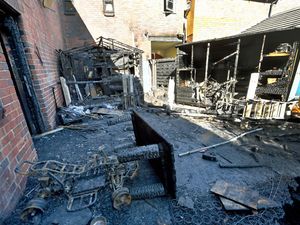From the world's oldest condoms to a nine-day Queen - fascinating Dudley facts
Dudley is again in the running for city status.
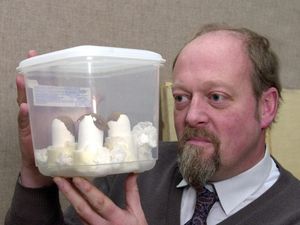
Bosses in the borough are applying for the upgrade as part of next year's celebrations to mark the Queen's Platinum Jubilee, and become the second city in the Black Country after Wolverhampton won its enhanced status 20 years ago.
The Mayor of the West Midlands Andy Street today threw his backing behind Dudley’s bid, saying success would benefit the whole region.
Judges say they will look at civic pride, heritage and innovation. If successful, Dudley would become the fourth city in the West Midlands Combined Authority area, along with Wolverhampton, Birmingham and Coventry.
Dudley facts
*While there have been reports of a castle in Dudley since the seventh century, it is generally thought that Dudley Castle was built in 1070 by Ansculf de Picquigny, after he was put in charge of what is now called the West Midlands by his boss, William the Conqueror.
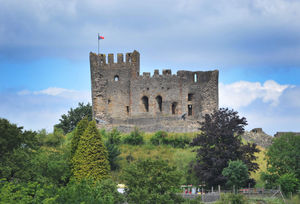
*The Church of St Edmund King and Martyr, commonly known as "Bottom Church", probably dates from the time of the King's death, about 870AD. St James' Priory was established by Gervase de Paganel in 1160, and St Thomas's Church – known locally as "Top Church" – had been dedicated by 1182. Lord Dudley established a market between the two churches, establishing the street layout which remains largely unaltered to this day.
*Wren's Nest, which became Britain's first National Nature Reserve for geology in 1956, is arguably the most important geological site in Britain. Dating back 425 million years, it is known around the world for its well-preserved Silurian coral reef fossils, and is said to be the most diverse and abundant fossil site in the British Isles. More than 700 types of fossil have been found at the site, 86 of which are unique to the location, including Calymene blumenbachii, a trilobite nicknamed the Dudley Bug. Wren's Nest is also a scheduled ancient monument and a Site of Special Scientific Interest.
*During the height of the Industrial Revolution, up to 20,000 tons of limestone were quarried each year from Wren's Nest, creating the famous Seven Sisters tunnel complex.
*In 1646, when the English Civil was raging, the Royalist stronghold of Dudley Castle was surrounded by Oliver Cromwell's troops. However, when Mistress Beaumont died, the Cavalier and Roundhead armies called a temporary ceasefire to allow her body to be carried from Top Church for burial.
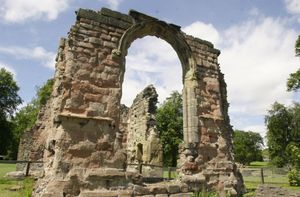
*In 2019, seven million people visited Dudley, spending £534 million and supporting 8,257 jobs in the tourist sector.
*The first modern industrial steam engine was built by Thomas Newcomen at the Coneygree coalmine in 1712. There is a replica of it at the Black Country Living Museum.
*The world's oldest condoms were discovered at Dudley Castle in 1985. Thought to date from the 1640s, they were made from animal and fish intestines. They were found during an excavation of a medieval toilet.
*Holbeche House, in Wall Heath, is where several members of the Gunpowder Plot, including ringleader Robert Catesby, made their final stand in 1605. Catesby died from gunshot wounds, but the plotters didn't help their case by drying their gunpowder around the fire.
*In 1622, Dud Dudley patented his new method of smelting iron using coke rather than charcoal. This was further developed by his great-grand-nephew Abraham Darby, also from Dudley, and led to the Industrial Revolution. Darby's grandson, Abraham Darby III, famously built the world's first iron bridge in Shrosphire. Legend has it that, at the height of the Industrial Revolution, the majority of the steel in the world was made within a 20-mile radius of the Earl of Dudley's Steel Works at Round Oak.
*From 1551 John Dudley, Duke of Northumberland and baron of Dudley Castle, became the de facto ruler of England during the regency of King Edward VI. On the King's death he crowned his daughter-in-law, Lady Jane Grey as the new Queen, but the reign was short-lived. After nine days, Edward's half-sister Mary was proclaimed Queen, and she responded by having both Dudley and Grey executed.
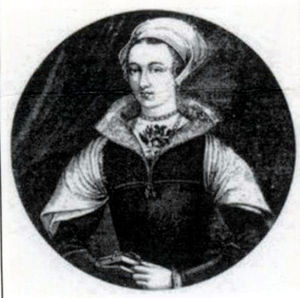
*Gray's Herbal Tablets have been made in Dudley since 1826. The company, in Hall Street, is also a major producer of seaside rock.
*Dudley Zoo was opened by the Earl of Dudley in the moat of the castle in 1937.
*Himley Hall, built during the early 1600s, served for about 350 years as a secondary home to the Lords of Dudley and their knights. Its occupants included Dud Dudley, whose 17th-century experiments in smelting iron ore with coal were carried out nearby. In 1645, King Charles I encamped in the grounds on his way to defeat at the Battle of Naseby during the English Civil War. In 1934, the Duke and Duchess of Kent spent their honeymoon on the estate, and King Edward VIII spent his last weekend there before his abdication. It is said he wrote his abdication speech at Himley.
*Thomas Dudley, in Birmingham New Road, is a big player when it comes to toilets and drain covers. Famous for its Dauntless cistern range, its products sold around the world.

*The anchor for the Titanic was made in Dudley in 1911 by industrialist Noah Hingley. Once completed, the anchor was towed from Hingley's works in Netherton to Dudley railway station by 20 shire horses.
*It’s widely believed that acclaimed fantasy author J R R Tolkien was inspired by Dudley and other areas of the Black Country, strongly basing the fictional location of Mordor on it. Tolkien himself was raised in the West Midlands and the name ‘Mordor’ even translates to ‘black region’ in Lord of the Rings’ Elven language of Sindarin.



